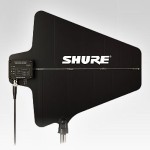Frequency Coordination and Antenna Placement for a Rock-Solid Wireless Microphone System
Subscribe on iTunes, SoundCloud, or Stitcher.
Register for Making Wireless work with Karl Winkler – January 3-4, 2015 – Dallas, TX
Music in this episode by The Giovanni Quartet, Brodsky Quartet, The Bartok Quartet, and Brentano String Quartet.
USC Recording Arts
Karl’s principles for success in audio
Have a good attitude. If your job is to roll tires from the back of the store to the front, you should be so good that people will pay to see you do it. Don’t be afraid of the work or think of it as being beneath you.
The basics always matter. Every art and science requires you to know the fundamentals.
Really listen. Learn to use use your ears as a troubleshooting tool. See Trouble-Shooting Audio Systems tutorial.
SynAudCon – Making Wireless Work
Wireless Workbench
Myths
Wireless mics are voodoo.
A directional antenna is always better.
I can get more range with boosted antennas.
Lectrosonics is too expensive.
Interview with Jim Venable from the Wireless Speaker Association
Axient system from Shure
Spectra Pulse from Audio Technica
Lectrosonics Facebook Group and FAQ page
Words
 Cavity Filter = Pass band filter. Blocks out bands of frequencies to focus only on the ones you want.
Cavity Filter = Pass band filter. Blocks out bands of frequencies to focus only on the ones you want.
Shark Fins = Directional antennas = LPDA (log periodic dipol arrays)
Intermodulation distortion = Occurs when two or more signals mix within an active device and create phantom frequencies.
Backup/spare frequencies = Pre-coordinated channels that you don’t need at the moment, but are already calculated to fit into your system design, preventing guess work.
Big Mistakes
Not separating your IEMs, comms, and mics into different bands.
Bad antenna placement.
Not calculating signal loss for long antenna cable.
Quotes
“Audio is a guilded career. You start as an apprentice. That’s how most people get their start.”
“Your attitude is irreplaceable.”
“There is something to learn from everything you do in life.”
“Any time you add an active component, you are potentially raising the noise floor and increasing distortion. It can mix signals and create intermodulation products. You always want a net zero gain between antenna and receiver.”
P.S.
How To Use Plugins with an Analog Console And Wireless Control
Multi Channel Wireless Home Theater Sound Systems
There’s No Such Thing As A Bad Microphone

In this episode of Sound Design Live I interview Karl Winkler from Lectrosonics. We discuss the basics of frequency coordination, wireless microphone myths, and how the Super Bowl manages 1,000 channels of wireless devices. Karl also explains what a backup frequency is, whether bluetooth devices, microwaves and cell phones will cause interference, and how to prepare for rogue wireless devices.
Register for Making Wireless work with Karl Winkler – January 3-4, 2015 – Dallas, TX
 Notes:
Notes:
Music in this episode by The Giovanni Quartet, Brodsky Quartet, The Bartok Quartet, and Brentano String Quartet.
USC Recording Arts
Karl’s principles for success in audio
Have a good attitude. If your job is to roll tires from the back of the store to the front, you should be so good that people will pay to see you do it. Don’t be afraid of the work or think of it as being beneath you.
The basics always matter. Every art and science requires you to know the fundamentals.
Really listen. Learn to use use your ears as a troubleshooting tool. See Trouble-Shooting Audio Systems tutorial.
SynAudCon – Making Wireless Work
Wireless Workbench
Myths
Wireless mics are voodoo.
A directional antenna is always better.
I can get more range with boosted antennas.
Lectrosonics is too expensive.
Interview with Jim Venable from the Wireless Speaker Association
Axient system from Shure
Spectra Pulse from Audio Technica
Lectrosonics Facebook Group and FAQ page
Words
 Cavity Filter = Pass band filter. Blocks out bands of frequencies to focus only on the ones you want.
Cavity Filter = Pass band filter. Blocks out bands of frequencies to focus only on the ones you want.Shark Fins = Directional antennas = LPDA (log periodic dipol arrays)
Intermodulation distortion = Occurs when two or more signals mix within an active device and create phantom frequencies.
Backup/spare frequencies = Pre-coordinated channels that you don’t need at the moment, but are already calculated to fit into your system design, preventing guess work.
Big Mistakes
Not separating your IEMs, comms, and mics into different bands.
Bad antenna placement.
Not calculating signal loss for long antenna cable.
Quotes
“Audio is a guilded career. You start as an apprentice. That’s how most people get their start.”
“Your attitude is irreplaceable.”
“There is something to learn from everything you do in life.”
“Any time you add an active component, you are potentially raising the noise floor and increasing distortion. It can mix signals and create intermodulation products. You always want a net zero gain between antenna and receiver.”

This article Frequency Coordination and Antenna Placement for a Rock-Solid Wireless Microphone System appeared first on Sound Design Live. Sign up for free updates here.
P.S.
How To Use Plugins with an Analog Console And Wireless Control
Multi Channel Wireless Home Theater Sound Systems
There’s No Such Thing As A Bad Microphone

Published on December 23, 2014 08:40
No comments have been added yet.



